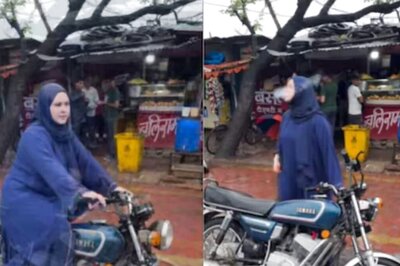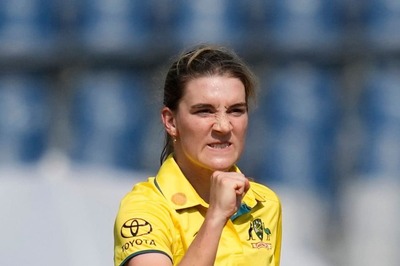Opinion | Big Win in Modi Government’s Scorecard: Halving Multidimensional Poverty Within Five Years

views
The high point of Prime Minister Narendra Modi’s concluding speech at the mega 39-party NDA meeting in Delhi on Tuesday was the mention of NITI Aayog’s report released on July 17, which is a huge endorsement of his government’s pro-poor policies. The report reflects a steady decrease in the multidimensional poverty index (MPI), which is an authentic metric for evaluating poverty levels, with 13.5 crore people exiting extreme poverty within the last five years.
Coming as it does in the penultimate year of the Modi-led NDA’s second term, the findings are an impressive add-on to the government’s performance scorecard, as it reflects that targeted policies helped decrease MPI from 24.85 percent in 2015 to 14.96 percent in 2019-21. The Modi government recorded an average GDP growth of 6.8 percent, most of which was achieved in the pre-pandemic years between 2014 to 2020. The benefits of higher GDP do not necessarily translate to equitable growth, but the government’s social welfare schemes and providing basic minimum income and food grains to the poorest of poor achieved quantifiable outcomes in lowering levels of absolute poverty.
Lowering poverty levels was also achieved through
- Infrastructure-led growth and increased public expenditure over the years
- Increased FDI inflows
- Benefits of the PLI schemes that are now showing results in creating employment
- Increased GSDP of some of the industrialised states which has increased the economic intensity in the organised and unorganised sectors, which percolated to the bottom of the rural and urban poor pyramid.
India will need to grow at an annual rate of 7.6 percent for the next 25 years in order to become a developed nation, according to a research paper published in the July RBI report. In 2022-23, our per capita income was estimated at $2,379. By World Bank standards, in order to be classified as a ‘high-income country’, we need to achieve levels of $21,664 by 2047, after factoring in the impact of inflation. This requires that the public investment rate over the next 25 years is raised to an estimated 30 percent of GDP so that investments flow into sectors that promote employment generation.
The next 25 years belong to India, provided we can improve on our human development indices and increase labour-force productivity. This can only happen through large-scale up-skilling, and transiting from agriculture to labour-intensive manufacturing which has the potential for greater employment elasticity. Currently, 45.5 percent of the labour force is engaged in agriculture or the unorganised sector, as they have limited education and skill sets.
NITI Aayog’s report provides national MPI estimates for India’s 36 states and 707 districts, measuring deprivations in all 12 SDG-aligned indicators. India is on track to achieve SDG 1.1 and 1.2, the goal being to reduce MPI by half, much ahead of the target of 2030 (poverty is currently measured as people living on less than $1.25 a day). We still have a long way to go in terms of achieving higher per capita income, as, in 2022, India ranked 149 out of 194 countries.
Surprisingly, even the poorest Indian states measured by ‘GDP per capita’ of UP, Bihar, MP, Odisha and Rajasthan recorded the sharpest decline in the numbers of the MPI poor, with rural areas showing a faster decline in absolute poverty from 32.6 percent in 2015 to 19.3 percent in 2021.
However, the steep decline in poverty headcount demonstrates the government’s flagship programs and strategic interventions which ensured equitable development across the 12 MPI indicators that have strong interlinkages in improving living standards, which factor in nutrition, maternal health and child mortality rates, sanitation, longer duration in school attendance, access to clean drinking water, subsidised cooking fuel and electricity, housing, ownership of assets and greater financial inclusion.
NITI Aayog’s findings are corroborated by the UNDP Global MPI Report released last week which stated that over a span of 15 years, (nine of which have been under the Modi government’s tenure), 415 million exited MPI, with the incidence of poverty falling from 55.1 percent in 2005 to 16.4 percent in 2021.
Substantiating the above economic data points, there is abundant real-life evidence of poverty mitigation as seen with higher levels of literacy, lower dropout rates from higher education, increased internet, mobile and television penetration in rural India, higher purchasing power of rural consumers and those in tier 2 and 3 cities, increased per capita income and per capita savings.
In conclusion, “Eradicating poverty is not a task of charity, it’s an act of justice, and the key to unlocking enormous human potential.” As the fastest growing economy, we can see how a rising tide helped lift 16.4 percent of India’s population, which was termed as poor, as recently as 2019, out of dire poverty.
The author is ex-Chairperson for the National Committee for Financial Inclusion and Literacy, NITI Aayog. Views expressed in the above piece are personal and solely that of the author. They do not necessarily reflect News18’s views.


















Comments
0 comment